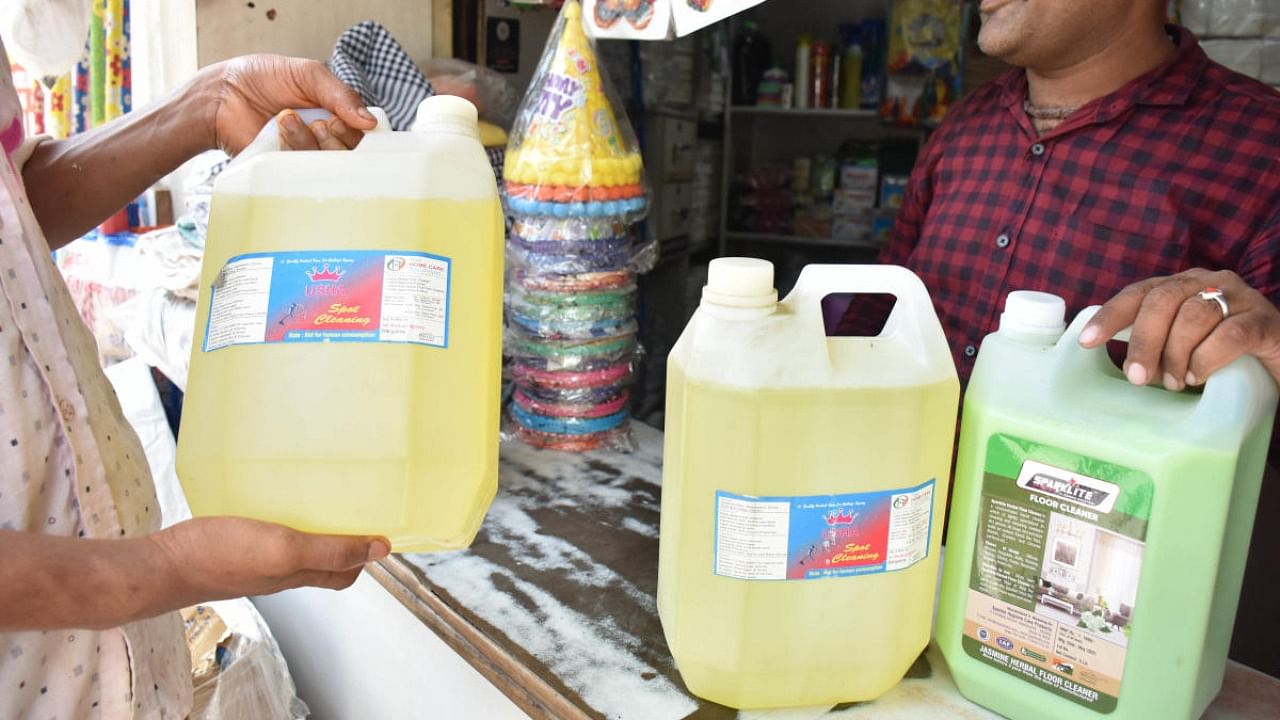
Shops are not following a court mandate that they sell acid only after collecting proof of the buyers’ identity. The city has witnessed three acid attacks in two months, with the victims suffering severe burns. Sulphuric acid is commonly used to clean tiles and to unclog drains.
In 2013, the Supreme Court put out guidelines about how acid should be sold, and mandated that shops take proof of the buyers’ identity.
In the wake of recent acid attacks, activists want stricter implementation of the rule and stringent punishment.
Activists and industry bodies Metrolife spoke to said they weren’t aware of any inspections and crackdowns on stores not abiding by the guidelines.
Citizen activist Tara Krishnaswamy says selling and procuring acid should be regulated strictly. “This should be done with proper licensing, and any over-the-counter sales should be punished,” she says.
Pandemic respite
Pragya Prasun Singh, founder of Atijeevan Foundation, says cases had come down during the pandemic.
“In April 2020, no cases were reported in the country. By 2020-end, a few incidents came to light and in 2021, 25-27 attacks were reported across the country,” she says.
Awareness about the court’s mandate is better among shopkeepers in Delhi and Mumbai, according to Pragya, a resident of C V Raman Nagar, and an acid attack survivor.
Satya K, a part of Aweksha, a women’s charitable trust attached to Victoria Hospital working with the burns and acid attack victims, says Bengaluru has been reporting two or three cases of acid attacks every year since 2019, drawing a blank only in 2021.
“Acid attacks are not carried out on impulse. They are planned at least a week in advance,” she says.
Social activist Brinda Adige says many cases are not even reported, and the police are not sensitised to the urgency of such cases.
Even if a police official asks the right questions, the survivor is often not provided any protection. The victims’ families are not given counselling either, she says.
“The charge sheet, which can be completed in 10-15 days, often takes much longer. Many policemen also try to discourage the victim from filing a complaint, and focus on ‘solutions’ like plastic surgery and compensation from the family of the accused,” she adds.
The law states that as soon as the FIR is registered, the victim must get 25% of compensation from Karnataka State Legal Services Authority (which on an average amounts to Rs 25,000), under the Victim Compensation Scheme.
The total compensation is usually around Rs 3.25 lakh, but this depends on the judge and the case, according to the severity of the burns.
“Families often get deterred by the long process. The law allows the police to take a statement before a magistrate under Section 164, but in how many cases does this happen?” she wonders.
The case continues for years at the courts. “By the time it is settled, the victim might not even be able to get the surgery done,” she says.
Stringent action
Only in four or five cases have the perpetrators got long jail terms, says Pragya. “Often, bail is given on humanitarian grounds —the accused is the only breadwinner of the family — or the jail term is reduced,” she says. The State government must monitor the sale of acid closely, says Brinda.
“A central data system, which mentions all details like the customer’s phone number and indentity proof, should be maintained. This could deter possible perpetrators,” Brinda notes. Information about past perpetrators
must be publicly available. Courts should speed up their processes and the judgments should be available in the public domain, she adds.
Satya says the judiciary must punish all burns-connected crimes and treat victims equally, irrespective of the degree of injury.
Aweksha receives at least one burns case every day. “These are caused by kerosene oil, cylinder gas, petrol, diesel, paint thinner, and now, even hand sanitiser. In most cases, women try to burn themselves but there is always a history of domestic violence and abuse by lovers, husbands and in-laws behind such a step,” she says.
A 100-year-old burns victim was taken to hospital. She had been tortured by her family, Satya says.
At Victoria, 200 burns cases a month
Dr Ramesha K T, head of plastic surgery and burns, Victoria Hospital, says acid attacks cause greater damage than fire accidents. “Acid attacks affect one’s skin worse than a normal burn. One can lose vision, and the severity of scarring and deformity are higher. Even with corrective surgeries, one might not get satisfactory results,” he says. “Every year we see around 2,400 burn cases, of which acid attacks are a small number. In the last decade, we have received on average three or four cases per year,” he says.
Law says
Section 326 A of the Indian Penal Code says those who cause grievous harm with acid should be jailed for not less than 10 years, and even given life imprisonment, with fine.
3 cases
Bengalureans witnessed three acid attacks in recent weeks:
April 28: Nagesh Babu threw acid on a 25-year-old woman in Sunkadakatte.
May 30: Janata Adak threw acid on a male colleague. The two worked at a jewellery shop at Cubbonpet.
June 10: Ahmed threw acid on a 32-year-old woman in Kumaraswamy Layout.
(With inputs from Barkha Kumari)